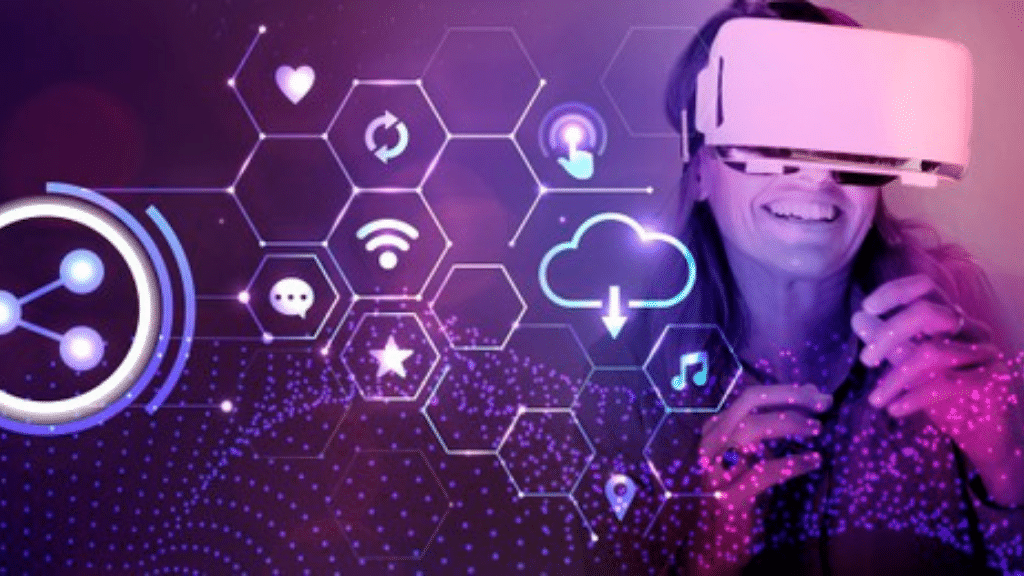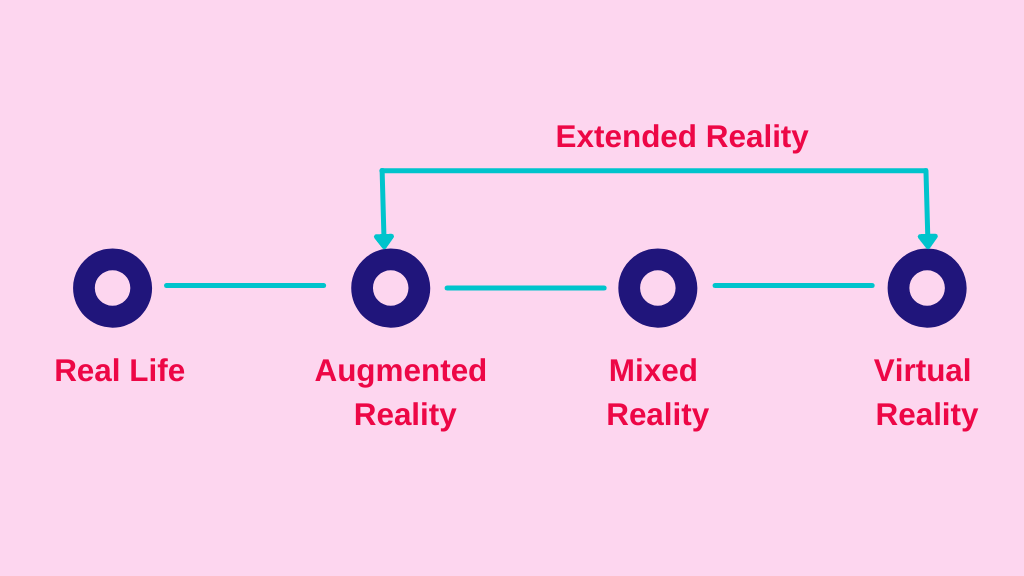Curious to know about Virtual reality and augmented reality, we break it down for you.
The recreational world is constantly thriving and seeking to improve and satisfy the audience. There is numerous industry dedicated to giving some fun to the daily routine. Similarly, every year these industries receive large amounts of income for their services and products.
Creativity and imagination are vital to the recreational industry. For a business to succeed in the market requires of keep the attention and interest of the audience. Making unique content that fascinates the public is the principal goal.
Since ancient times, people have searched for ways of entertainment, which is how the arts and sports began. Imagination is the motor that drives art and grasps the attention of the spectators pulls them into magical and fantastic worlds. People never stop to seek ways to amuse themselves.
Such high demand is motivating many businesses to develop a new way to entertain people. The competition gives birth to technologies like virtual, augmented, and even mixed realities. These advances make the limit between fiction and reality blurred, transporting users to incredible adventures that before were limited to their imagination.
Where start the virtual reality?
Virtual Reality exists for various years, but it was called so in the latter half of the XX century. Going back to the previous century, when writers give their notions about the idea, but it had no name yet.
People opened their eyes to incredible ideas about the power of technology thanks to the stories of science fiction. Novels and art representing inventions that can change the world have served as inspiration to inventors worldwide.
No science does not want to achieve a breakthrough in his field. Over time, different brilliant minds inspired by the wonders of fiction try to make those ideas into reality. It has helped the development of science serving as the biggest motivator.
The birth of virtual reality is not different because it started as a revolutionary idea in fiction, but science caught up with it to make it true. Similarly, one of the biggest drives for development is competition and conflict like another big advancement, virtual reality precursor began with the army.
In those warring times, the US Marines asked the Massachusetts Institution of Technology to make a flying simulator to provide easier training to the troops. In the first third of the XX century was made the first mechanical flying simulator, the Blue Box.
In the following decades, technology keeps progressing to make it more realistic. Different companies release attempts like The Sword of Damocles trying to reach the next step. Even, there was a helmet of virtual reality that in current times is recognized as augmented reality stead.
In the latest part of the 70 decades, MIT finally succeeds in making a program that gives the users the experience of being on the streets of Aspen thanks to high-quality photographs.
Finally, midway through the 80 decades, the Six Flags Company made one of the first cinemas in 4D, a new advancement for the entertainment industry. Since then the technology has reached an even higher stage of development and it is divided into three currents: the augmented reality, virtual reality proper, and mixed reality.
Virtual reality

Albeit the concept is often used to refer to similar technologies in a general way, it is not the same as augmented reality or mixed reality. The 3 have similitudes, but also differences that split them.
Virtual reality is the most immersive of the three, in the sense that the user will find himself perceiving a new surrounding different from the real world. The user will see and hear images and sounds generated by a computer that replace those of the real environment. This is accomplished thanks to the advances in computers and new devices named as Head-Mounted Display.
The HMD is like a helmet or special glasses that provide 3D images and synchronized sounds that are connected to a computer that controls both. Both stimuli will imitate an environment that the user can interact with through special controls, the haptic controls. Together, the device gives the experience of being in a different environment and even another world entirely.
More than that, this type of technology includes multiple movement sensors to follow you. That way, when you move in a direction or only change where you are looking, the displayed images move accordingly to give you a 360 vision of your new surroundings. That makes you feel like you are really inside a different place as another location or inside a game.
Augmented reality

Augmented reality focus on providing a new way of perceiving the real world by including some virtual details to what is normally seen. This technology bases on the same origin of virtual reality and are often confused as the same. The principles are similar at some point as well.
The device that provides an augmented reality experience just includes some additional information and virtual details to complement or what is in the real world. Another way to explaining, it is like seen a statue through a device, and it adds something that is not there in the real world because it is only a virtual detail.
The most common example would be the game Pokémon Go, in it you use the camera of your smartphone to see the surrounding world that looks mostly the same, but aiming to some places you will found randomly a Pokémon to capture. The creature is not real but by looking to the world through the device virtual and reality overlap.
This technology is not limited to games; it is used to study or even to see additional details like a name or the hour while looking at something. The purpose of AR is to overlap digital details, images, holograms, and the like upon what you are seen in the real world with the device.
Mixed reality

In a sense is the child of the previous 2. Mixed reality combines the technology of both virtual reality and augmented reality to take the best of both parts to give an immersive experience including the real environment as well as giving more liberty of movement.
In mixed reality, the design of the devices allows the interaction of the user with the virtual reality and the real world simultaneously, because this type of reality uses advanced imaging and detection technologies to give the user an immersive experience.
The mixed reality makes thinner the line between fiction and reality by allowing the user to observe the real world simultaneously with the ability to interact with the virtual environment overlaying it with their hands. In this way, the user enjoys the liberty of movement without risks and the experience that the virtual world provides.
The MR technology changes the principles that split the fiction from the real representing a significant technological advancement that can help different industries. The immersive experience could provide the tools to improve how individuals learn or play.
Differences between the three realities
The differences between the three realities are related to the features of the experience each one provides and the devices required for each to work. Thanks to the specific characteristics of each type of reality they have some opposite features or combinations, such as:
- VR completely provides a virtual environment for the user to get immersed in the AR uses the setting of the real world as a base and adds some details, while the MR overlaps the two settings to do not losing the visual of the real world and immersing in the virtual experience simultaneously.
- The AR allows the user to keep interacting with the real world normally and controlling the experience, the VR completely overlaps the real with the virtual setting and does not allows its control to the user, while MR overlaps the virtual in the real just enough to allow the control of both realities.
- The devices of the 3 have different levels of complexity, AR is compatible with smartphones, and VR requires HMD or similar devices, while MR uses a different type of special glasses with complex detection systems, like a midway point between AR and VR.
Different areas where virtual reality has become very popular

Albeit the most common industry is in entertainment with video games and movies, the VR, AR, and MR technologies have applications in various other areas, like:
- Healthcare: These realities are useful as learning tools for health services personnel. For example, it helps them simulating a surgical procedure for practice and study.
- Travels: Using these technologies provides anyone with an immersive experience like traveling anywhere in the world and even beyond. Imagine using VR or MR to simulate you visit another country, a touristic location, even another planet, or outer space, anything is possible. AR can improve the experience of visiting anywhere by providing curious facts about anything you are looking at as art pieces.
- Sports: Some companies employ virtual training programs to exercise professional athletes.
- Entertainment: of course, there are thousands of games that employ these technologies to give immersive experiences to players, various movies, and tv shows use them too.
Elements we need to live a virtual reality or augmented reality experience
Of course, as said before, each of these realities uses different and complex devices of state-of-the-art technology to provide their experiences to the users.
Special scopes
Each of the three requires specialized equipment designed to provide the respective immersive experience:
- The VR device blocks the user from visualizing the outside world, so when the device is off the person will not see anything. Uses special LED screens that occupy the visual field of the user and have sensors to follow the movement of the head. As result, it produces a 360 video that makes the user think it is in a different area.
- MR employs special glasses designed to allow the user to see the real world through it, while simultaneously projecting the virtual setting. It is only visual with the glasses, but still gives an immersive experience and has a detecting system to let the user interact with the virtual setting as if it were the real world.
- Albeit the AR is compatible with smartphones, it is available with special glasses too. It is similar to MR, but with less direct interaction with the virtual setting.